Special collections handled with care
Photos courtesy of Poeh Cultural Center.
The National Museum of the American Indian (NMAI) is a museum and cultural institution responsible for a collection of over 825,000 items from Native American cultures. The collection includes baskets, weavings, pottery, and more – both historical and contemporary. Caring for these cultural belongings requires knowledge not only of the items themselves and their conservation, but also engaging with their communities and cultures of origin.
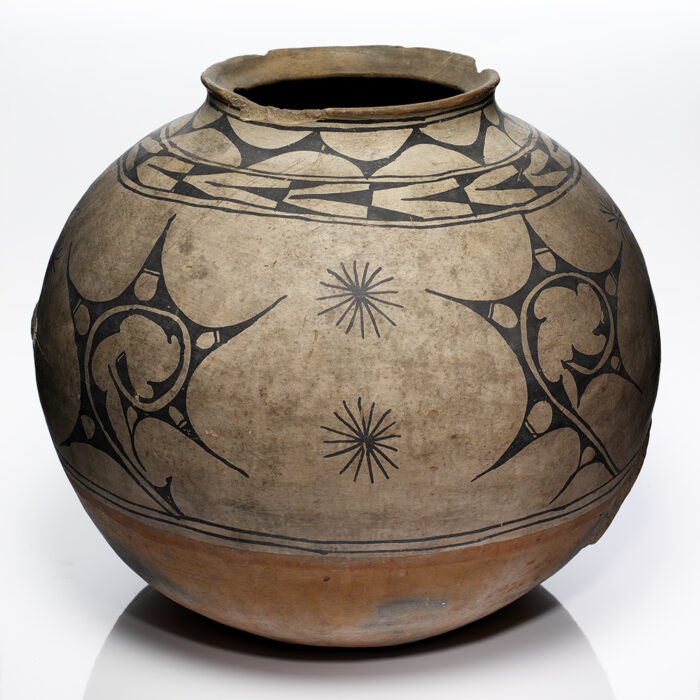
STORAGE JAR, C1850 (SAN ILDEFONSO PUEBLO) Courtesy of the National Museum of the American Indian, Smithsonian Institution
Relatives Reconnected
NMAI has a history of working with tribal museums and cultural centers like the Poeh Cultural Center, which represents and serves Tewa speaking peoples in the Pueblos of Pojoaque, Nambe, San Ildefonso, Santa Clara, Ohkay Owingeh, and Tesuque in New Mexico. One of the NMAI’s initiatives is community loans, which foster new relationships and restore historical connections between these communities and the items in NMAI’s collections.
Tewa Pueblo artists, elders, and community members consider the pots from their communities to be long lost relatives and made the request that they be returned. With that understanding, NMAI worked with Poeh Cultural Center to return the pots home to their loved ones. In 2019, this work resulted in Di Wae Powa, They Came Back, an exhibition of 100 Tewa pots from the NMAI collection which were returned to Poeh Cultural Center as a long-term loan and reunited with the descendants of their creators.
Each tribal museum and cultural center has unique circumstances, and loaned items are housed with specific distinctive complexities, requirements, and logistics for the care of each item. NMAI staff shared knowledge with Poeh Cultural Center in the form of a mount making workshop and a conservation workshop for repairing ceramics, photography for collections, and more. From Poeh staff, NMAI learned stewardship of the items, and culturally appropriate ways to handle and care for them.
Poeh Cultural Center received funds through a grant to NMAI from Margaret A. Cargill Philanthropies (MACP) to support an education staff member, Melvin Sarracino (Laguna Pueblo), to design education programming. As part of his work, Melvin developed a guide to handling pottery and coordinated the development of a pottery-making course that centered around the NMAI loaned items. San Ildefonso Pueblo artist Erik J. Fender (Than Tsideh, or Sunbird) was supported through additional funding to instruct the course and purchase materials. According to the course syllabus, “the interactive class is designed to inform interested individuals on traditional Tewa pottery making. The instructor will guide participants to better understand various pottery styles. The Di Wae Powa, They Came Back display will be used for research and inspiration.”
Classes began with reviewing the loaned objects in the Di Wae Powa exhibit. Then, participants selected one of the displayed pots to recreate, then handled them to learn from the pots themselves, and then they created similar pots throughout a ten-week course.
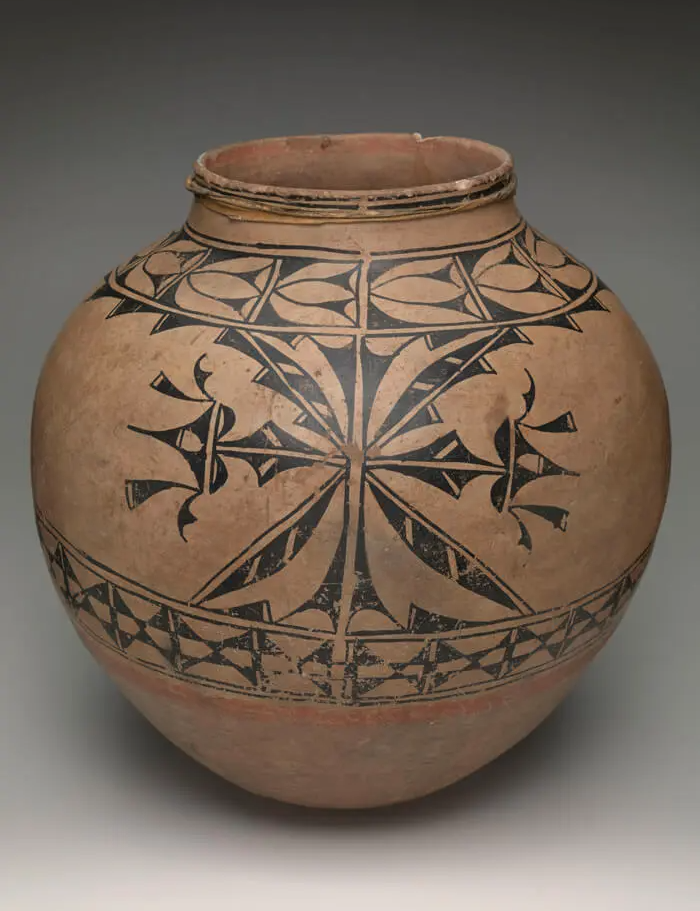
Jar (San Ildefonso Pueblo). Photo courtesy the Poeh Cultural Center.
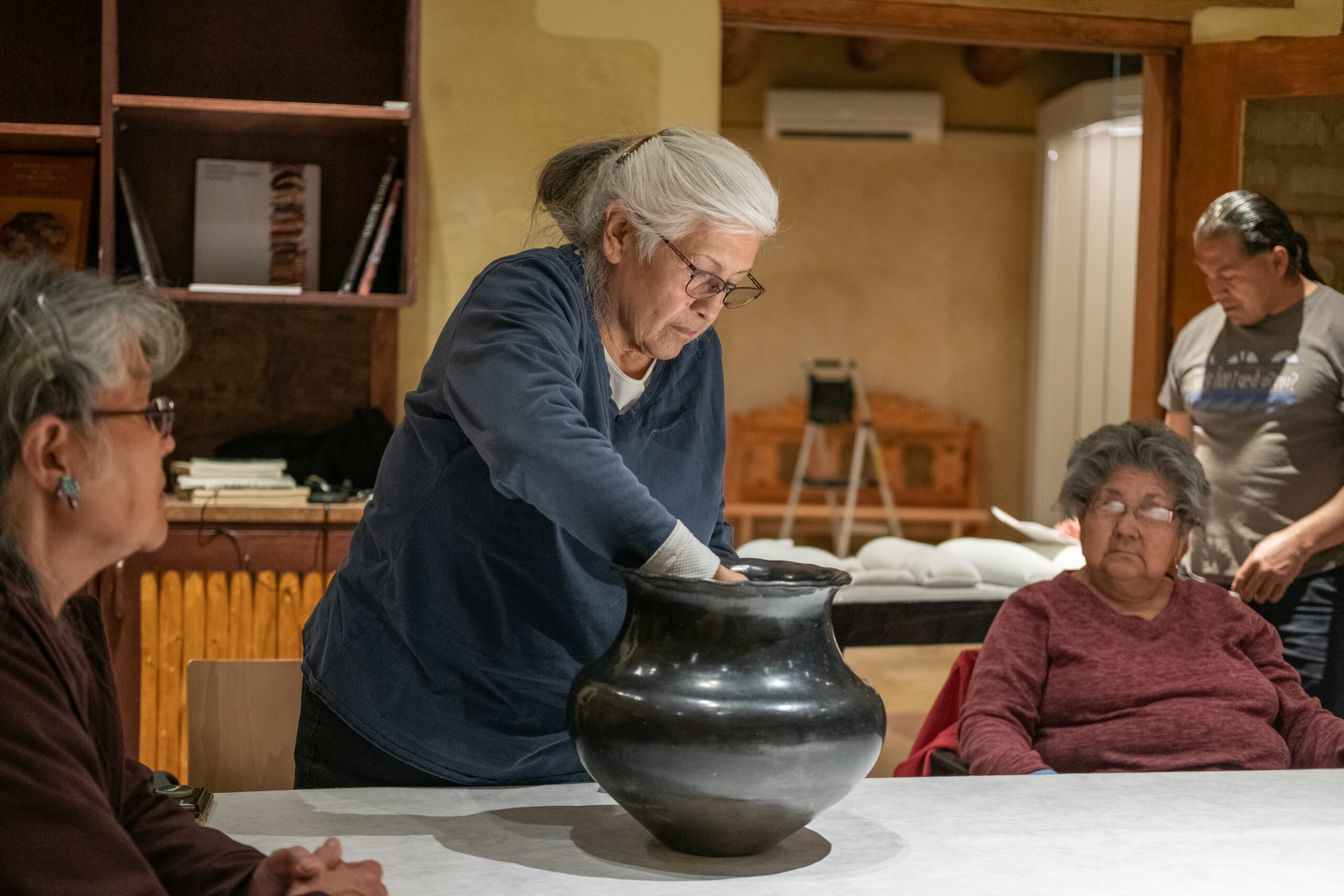
Photos courtesy of Poeh Cultural Center.
Making Pueblo Pottery
The students and instructor met twice each week. In week three, students learned to build a pot using the coil or slab method and to use a scraper and sandpaper to smooth the pot. In week four, they scraped and burnished the pot, and by week five they were using polishing stones to design the pot’s outer surface. In week six they used yucca to make a paintbrush and learned about Beeweed for paint. Week seven entailed designing pottery freehand or with a template, adding pencil following or inspired by Di Wae Powa pottery designs. In week eight, students applied paint to the pottery, and in week nine they finished painting and prepared the pots for firing. In week ten, they learned about firing pots and completed their projects.
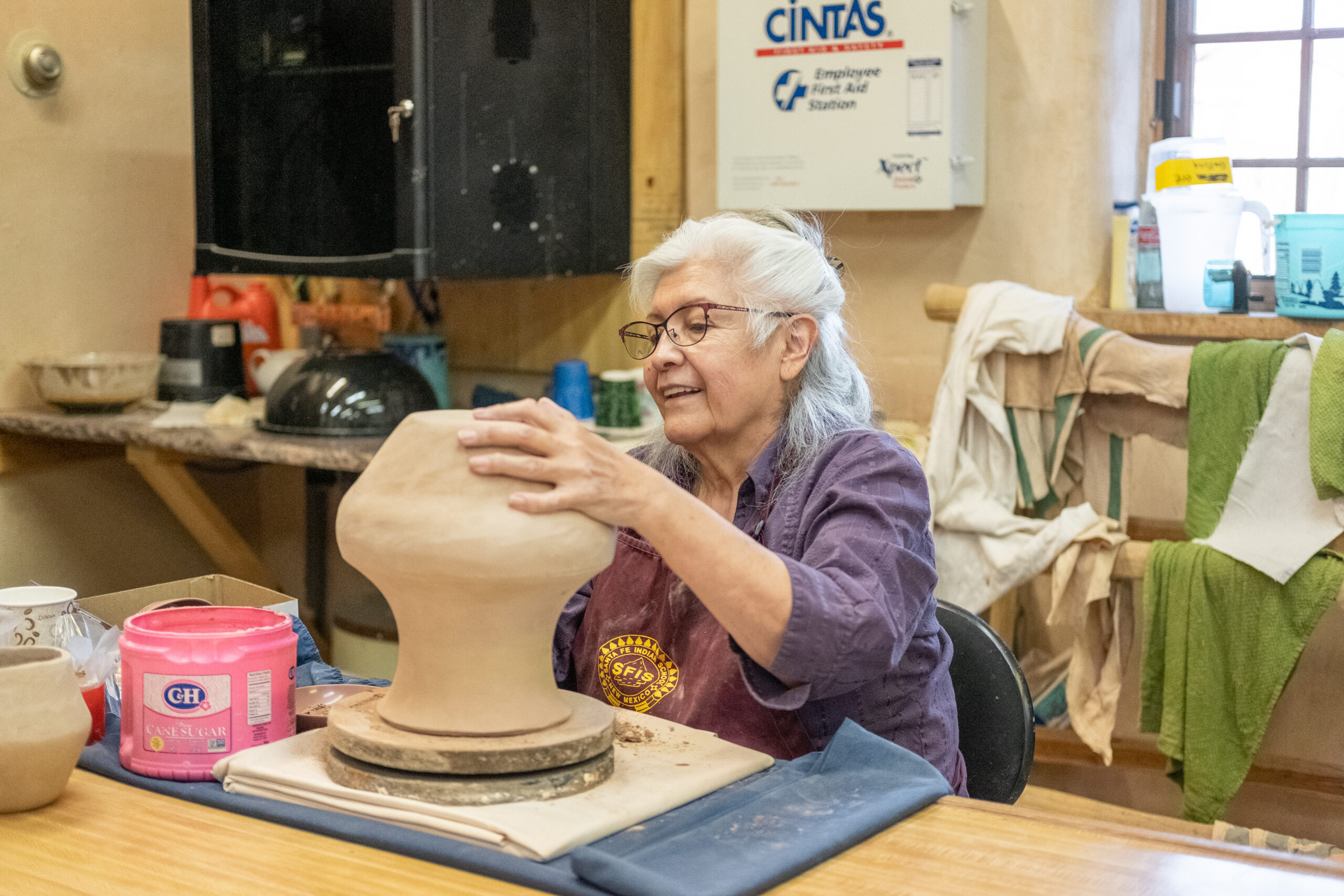
Photos courtesy of Poeh Cultural Center.
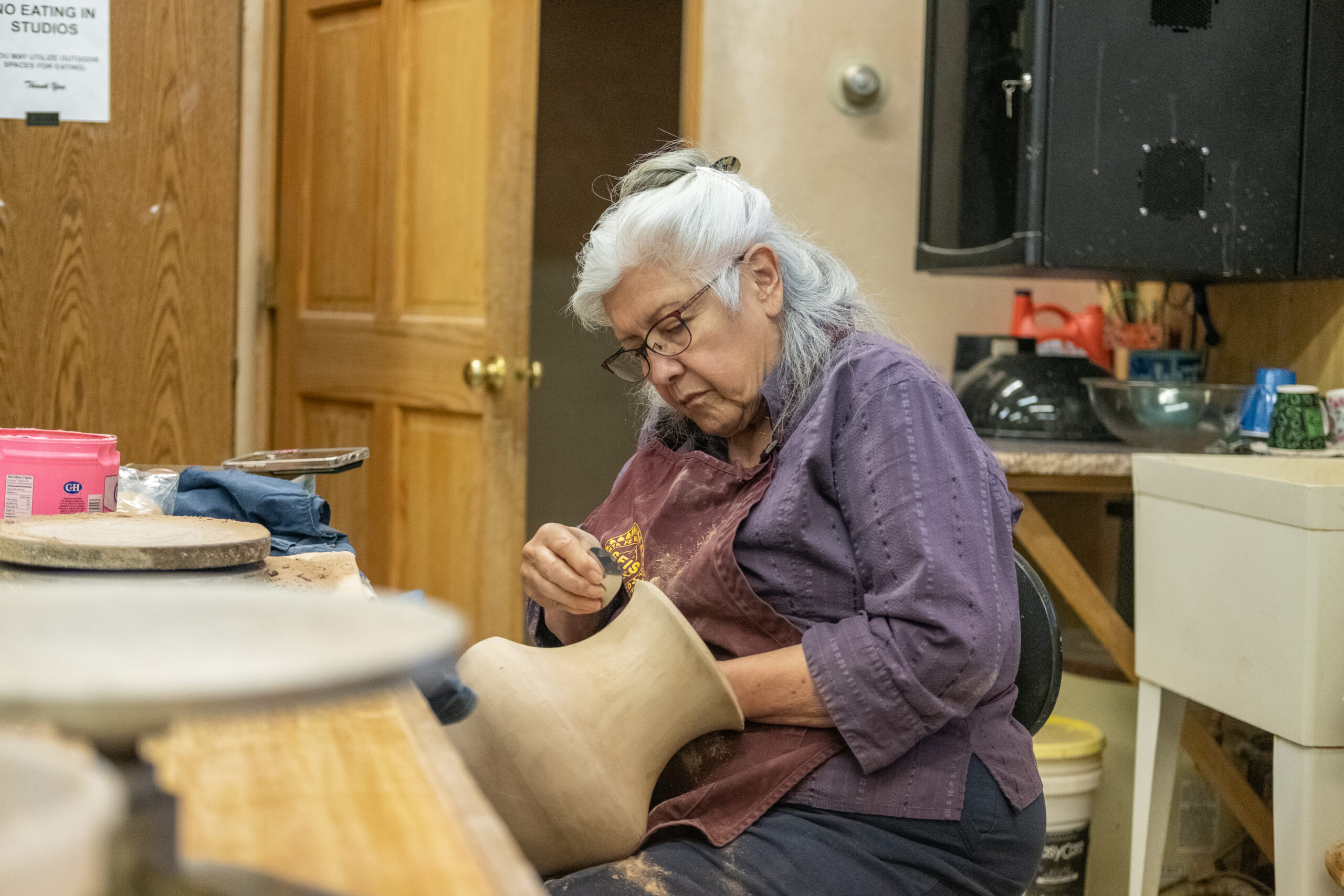
Photos courtesy of Poeh Cultural Center.
Re-Established Connections
In reviews of the course, each student included handling the Di Wae Powa pots as something that stood out for them during this experience. Responses included, “I realize that I’m on my way to becoming a better artist. The one thing that I really enjoyed was touching and examining the [Di Wae Powa exhibit] pots. I feel very lucky to have participated in class;” “Handling the old pots was a highlight of the class. This class is my favorite at the Poeh.” “[What stood out was] being able to reconnect with ancestral pots designs and styles;” and
"It’s really eye-opening to see how others make their clay. I think what stands out is we got to handle pots from long ago. How they felt up close was great!”
— Student, Poeh Cultural Center
The course ran in Spring 2023 and ran again in Fall 2023. An updated version of the class is being planned for Fall 2025.
Margaret studied pottery under artist Mary Stone McClendon, also known as Ataloa, a member of the Chickasaw Nation, and she learned to appreciate the artistry and beauty of clay brought to life. She cherished the time she spent learning with Ataloa and recognized the importance of art in cultural traditions. Now, future generations can benefit from the reunion of these objects and their communities, and the relationship Poeh Cultural Center and other tribal museums and cultural centers have with NMAI can bring about greater access for communities to their relatives, near and far.
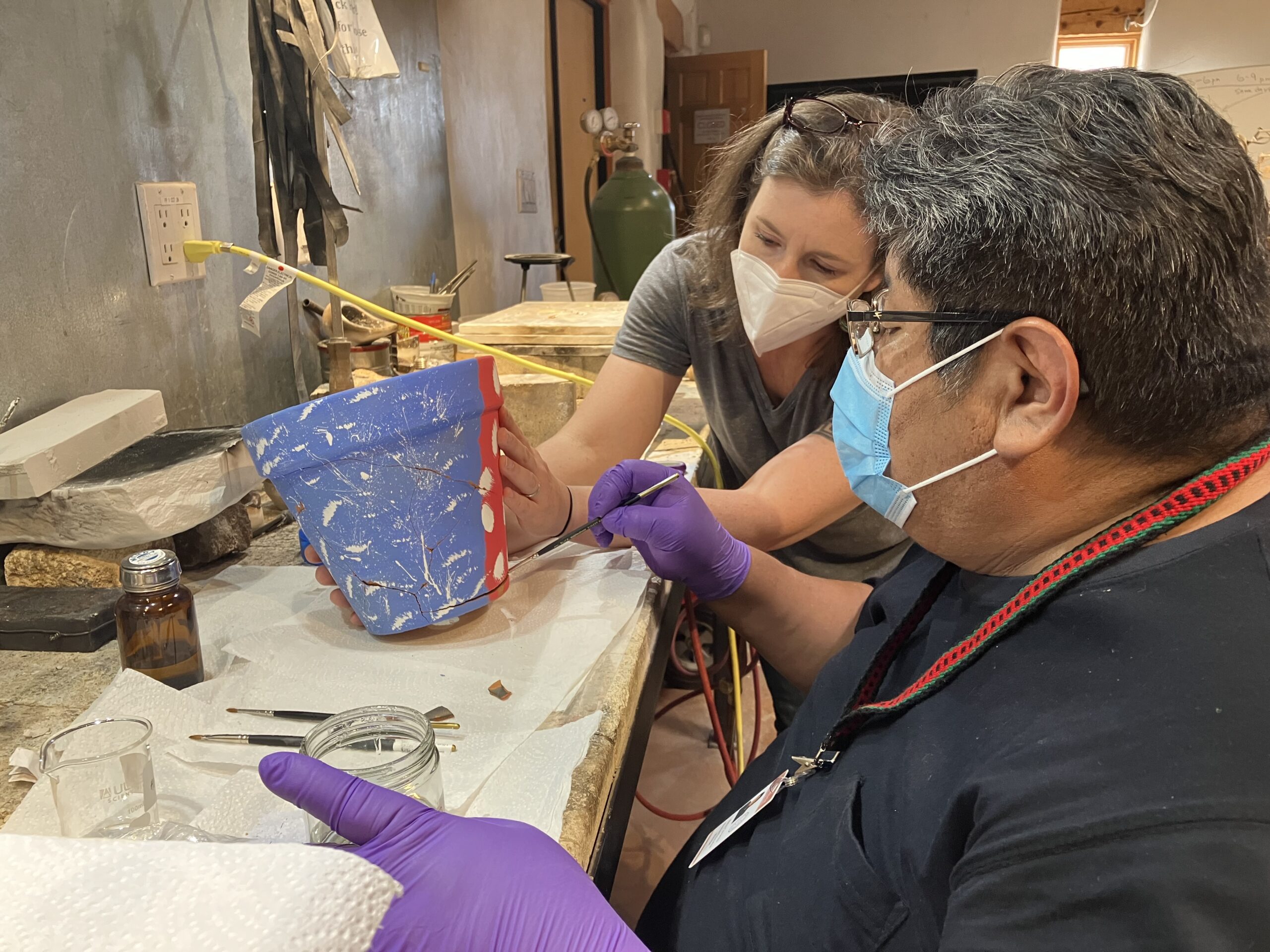
Courtesy of National Museum of American Indian.
